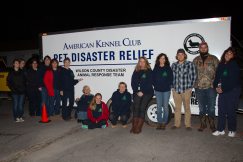Barn fires are one of any horse owner’s biggest nightmares. In just a few minutes of heat, smoke, and fury, thousands of dollars of saddles, bridles, hay, grain, and equipment can be lost along with the barn. That your horse could be trapped inside is almost too painful to imagine.
Preventing barn fires and being well prepared to deal with a fire can mean the difference between life and death for your horses.
If you have a barn, it’s essential that you understand how fires start and how to deal with them.
But the single most important thing is to be vigilent at all times.
HOW TO PREVENT BARN FIRES
Prohibit smoking in or around the barn. A discarded cigarette can ignite dry bedding or hay in seconds.
Avoid parking tractors and vehicles in or near the barn. Engine heat and backfires can spark a flame.
Store other machinery and flammable materials outside the barn.
Inspect electrical systems regularly and immediately correct any problems. Rodents can chew on electrical wiring and cause damage that quickly becomes a fire hazard.
Keep appliances to a minimum in the barn. Use stall fans, space heaters, and radios only when someone is in the barn.
Be sure hay is dry before storing it. Hay that is too moist may spontaneously combust. Store hay outside the barn in a dry, covered area when possible.
Most barn fires are preventable, and too often they result from negligence or apathy toward fire prevention.
HOW TO PREPARE FOR A BARN FIRE
Keep aisles, stall doors, and barn doors free of debris and equipment.
Mount fire extinguishers around the stable, especially at all entrances.
Have a planned evacuation route for every stall in the barn.
Familiarize employees with your evacuation plans.
Post emergency telephone numbers at each telephone and at each entrance. Emergency telephone numbers should include those of the barn manager, veterinarian, emergency response, and, if you have horses, qualified handlers.
Also keep your barn’s street address clearly posted to relay to the 911 operator or your community’s emergency services.
Be sure your address and the entrance to your property are clearly visible from the main road.
Consider installing smoke alarms and heat detectors throughout the barn. New heat sensors can detect rapidly changing temperatures in your barn. The heat sensors should be hooked up to sirens that will quickly alert you and your neighbors to a possible barn fire.
Host an open house for emergency services personnel in your area to familiarize them with the layout of your property. If you have horses, provide them with tips on horse handling or present a mini-seminar with hands-on training for horse handling.
Familiarize your animals with emergency procedures and common activities they would encounter during a disaster. Try to desensitize them to flashlights and flashing lights.
HOW TO RESPOND SAFELY TO A BARN FIRE
Immediately call 911 or your local emergency services.
Do not enter the barn if it is already engulfed in flames.
If it is safe for you to enter the barn, evacuate animals one at a time, starting with the most accessible ones.
Never let animals loose in an area where they are able to return to the barn.
Put a halter and lead rope on each horse when you open the stall door. Be aware that horses tend to run back into burning barns out of fear and confusion.
Blindfold horses only if absolutely necessary. Many horses will balk at a blindfold, making evacuation more difficult and time consuming.
Move them to paddocks close enough to reach quickly but far enough from the barn that they won’t be affected by the fire and smoke.
Be sure to have all your horses checked by a veterinarian after the fire. Smoke inhalation can cause serious lung damage and respiratory complications. Horses are prone to stress and may experience colic after a fire.
Barn Fire Preparedness tips from HSUS.org








